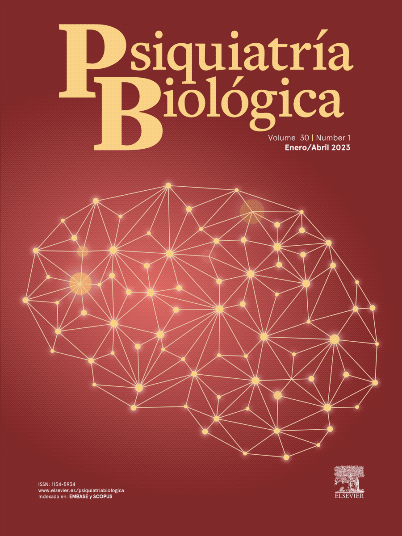En las últimas décadas se ha producido un aumento voraz del uso de opiáceos, con graves consecuencias en el ámbito sanitario. Consideramos necesaria la reflexión sobre el nuevo perfil de consumidores de opiáceos, con acceso desde el sistema sanitario, y las dificultades en diagnosticar el patrón de dependencia en este tipo de pacientes. Así mismo tomar conciencia de la necesidad de intervenciones multidisciplinares más tempranas y el diagnóstico de trastornos psiquiátricos comórbidos que agraven el consumo patológico.
Caso clínicoPresentamos el caso de una mujer de 54 años con dependencia severa a fentanilo sublingual de 4 años de evolución tras una enfermedad neoplásica con numerosas complicaciones. Se coordina el ingreso en la unidad de psiquiatría tras varios intentos infructuosos de deshabituación a nivel ambulatorio en distintos recursos.
ResultadosTras un ingreso de un mes de evolución se consigue reforzar la conciencia de enfermedad. Se inicia tratamiento sustitutivo con metadona y se deriva al CAID para seguimiento ambulatorio.
ConclusionesEs necesaria la coordinación entre las distintas áreas a las que le compete este problema, con la intención de implementar medidas de screening y prevención, así como de protocolizar planes de actuación con este tipo de pacientes en los recursos más adecuados.
There has been an enormous increase in the use of opioids in the past 20 years or so, with serious consequences for the health services. We believe that reflection is required on the profile of patients who take opioids, with access from the health system, as well as the difficulties in diagnosing the dependency pattern of this type of patient. Furthermore, to be aware of the need for earlier multidisciplinary intervention and the diagnosis of comorbid psychiatric disorders that aggravate the pathological use.
Clinical caseThe case is presented of a 54 year-old woman with a severe dependency on sublingual fentanyl of 4 years onset, after a neoplastic disease with numerous complications. She was admitted to the Psychiatric Unit after several unsuccessful attempts to quitting the habit using different recourse at outpatient level.
ResultsAfter an admission of one month, awareness of a disease was reinforced. Replacement treatment with methadone was started and she was referred to the Integrated Drug Addictions Unit for outpatient follow-up.
ConclusionsCoordination is needed between the different health areas that deal with this problem. Screening and prevention measures should be implemented, as well as having a standardised action plan for these types of patients using the most appropriate resources.
Artículo
Comprando el artículo el PDF del mismo podrá ser descargado
Precio 19,34 €
Comprar ahora






